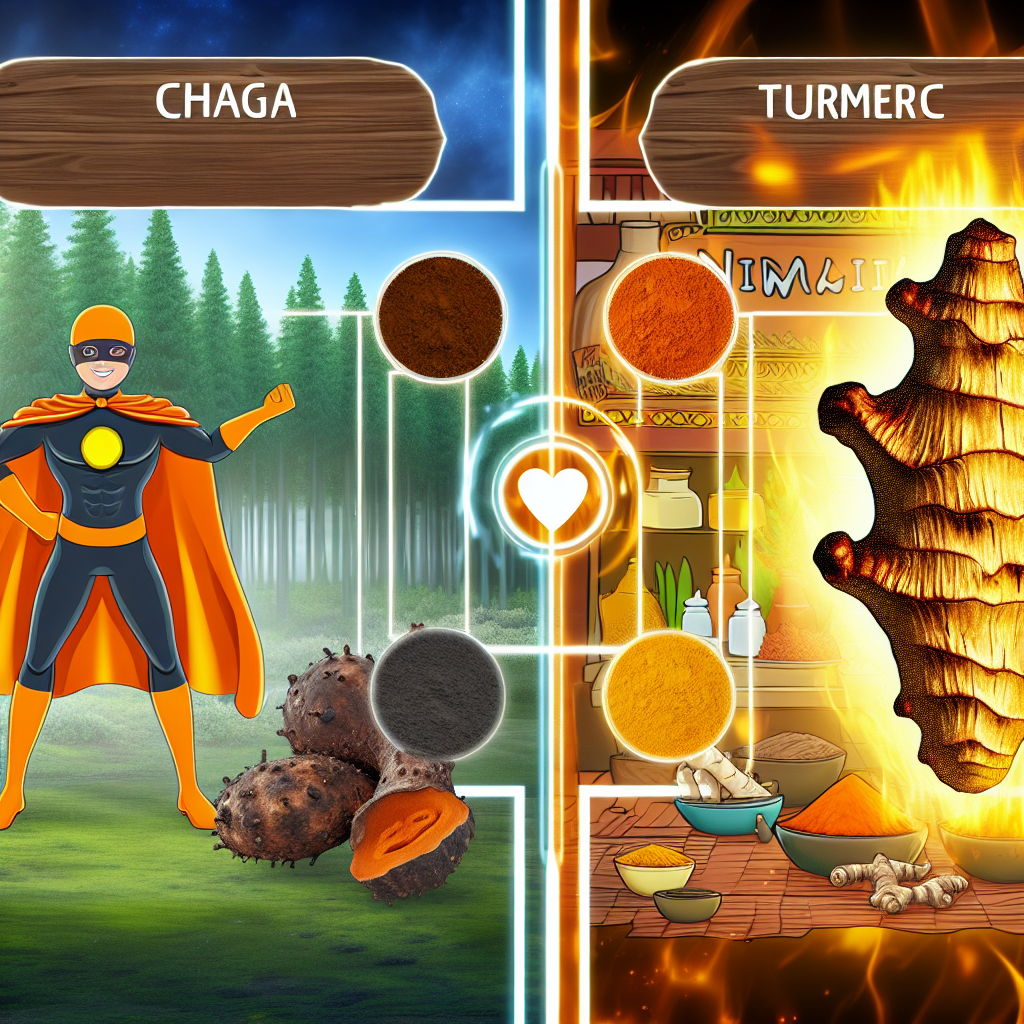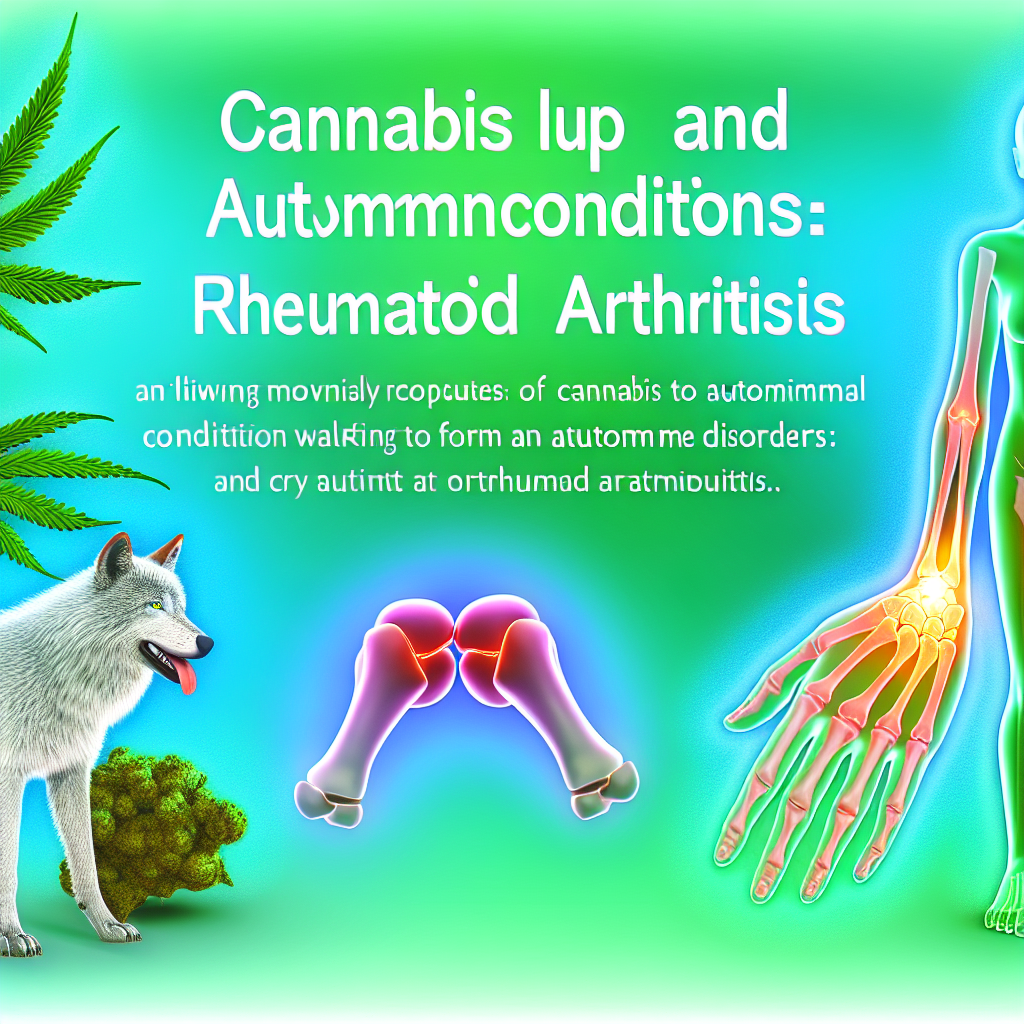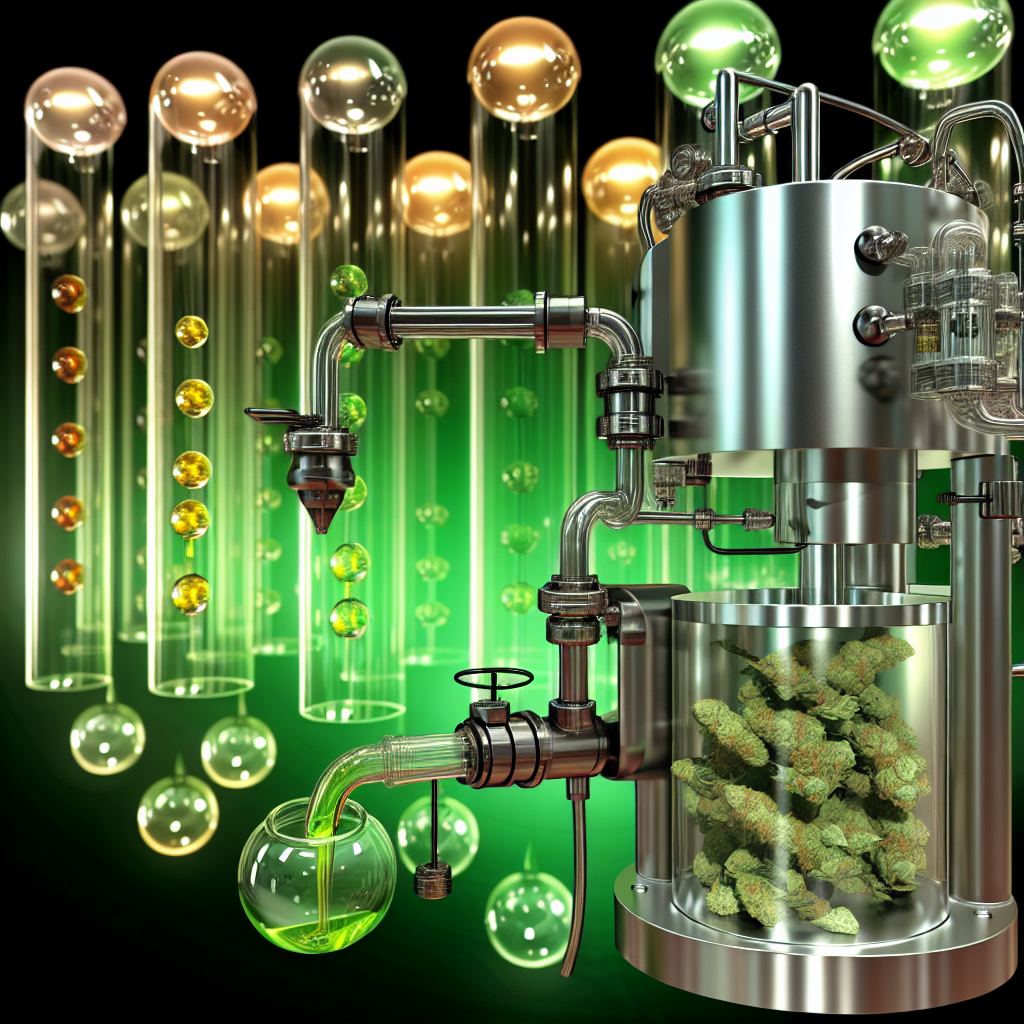Chaga vs Turmeric: Which Anti-Inflammatory Superstar Wins?
What is Chaga? The Sooty Mushroom with Supercharged Benefits
Chaga (Inonotus obliquus) is a slow-growing medicinal mushroom that naturally thrives on birch trees in frigid regions like Siberia, Alaska, and Canada. Historically used in Russian and Northern European folk medicine, Chaga is rich in immune-supporting beta-glucans and powerful antioxidants like melanin and polyphenols. Typically consumed as a tea, tincture, or powder, Chaga is commonly credited with reducing inflammation, slowing cellular aging, and maintaining immune system balance.
Golden Roots: Why Turmeric Has Been a Healing Staple for Millennia
Turmeric (Curcuma longa) is no stranger to the world of natural medicine. Used extensively in Ayurvedic and Traditional Chinese Medicine, turmeric’s active compound—curcumin—has been studied for its potent anti-inflammatory, antioxidant, and even antidepressant effects. Thanks to innovations like curcumin-piperine blends that enhance bioavailability, turmeric supplements and golden milk lattes are now mainstream wellness staples around the globe.
Inflammation: The Hidden Enemy Inside Your Body
While inflammation is a necessary biological defense mechanism, long-term (chronic) inflammation is a root cause behind some of today’s most destructive diseases, including:
– Rheumatoid arthritis
– Cardiovascular disease
– Alzheimer’s disease
– Type 2 diabetes
– Some cancers
Naturally, wellness seekers are turning to botanical alternatives that support the body’s ability to keep inflammation in check—and both Chaga and turmeric have shown remarkable promise.
Turmeric Takes the Lead: Extensive Research and Clinical Validation
Curcumin, turmeric’s active compound, is among the most researched natural anti-inflammatories to date.
A 2017 meta-analysis in the Journal of Medicinal Food found that curcumin significantly improved symptoms in conditions like osteoarthritis, inflammatory bowel disease, and metabolic syndrome. In a randomized double-blind study, curcumin relieved joint pain in rheumatoid arthritis on par with NSAIDs—without the side effects.
Turmeric works by targeting inflammatory biomarkers such as:
– TNF-alpha
– IL-6
– COX-2 enzyme (also targeted by common NSAIDs)
These properties make turmeric an effective go-to for managing joint pain, muscle recovery, and systemic inflammation.
Chaga’s Rise: The Underdog with Immuno-Modulating and Antioxidant Power
Though less researched than turmeric, Chaga’s anti-inflammatory effects are gradually making their way into the scientific spotlight.
A 2005 study in BioFactors found that Chaga extract suppressed nitric oxide (NO) production in lab-activated macrophages—key indicators of inflammation. A 2010 study from Kyung Hee University shows that Chaga modulates NF-κB pathway signaling, a vital regulator in inflammatory responses.
Thanks to its rich content of:
– Beta-glucans (immune support)
– Polyphenols and triterpenoids
– Exceptionally high ORAC scores
Chaga may serve as a systemic protector—strengthening immune responses while reducing oxidative stress and cellular inflammation.
Formulations Matter: How to Maximize the Benefits of Each
For turmeric, absorption is everything. Curcumin on its own is poorly bioavailable. That’s why many supplements include black pepper extract (piperine), which can increase absorption up to 2,000%.
Similarly, Chaga’s active compounds are found within its tough, woody structure, making proper extraction crucial. Hot-water or dual-extraction methods are necessary to access Chaga’s triterpenoids and polysaccharides.
Tips for choosing high-quality supplements:
– Look for dual-extracted Chaga (hot water + alcohol)
– Choose turmeric supplements with piperine or liposomal formulations
– Verify standardization: 95% curcuminoids for turmeric; beta-glucan % for Chaga
Battle of the Botanicals: So, Who Wins?
If turmeric and Chaga were in a boxing match, turmeric might land a faster punch thanks to its clinically validated, acute symptom relief. But Chaga could be the long-game champion, nourishing the immune system and fighting oxidative stress on a foundational level.
Winner? It’s a tie—or better yet, a perfect team. For wellness professionals, pairing turmeric’s quick therapeutic kick with Chaga’s deep cellular defense could be the ultimate botanical duo.
The synergy between these two, especially when paired with cannabinoids, suggests a bright future in naturopathic and cannabis-based protocols for chronic inflammation.
Final Thoughts: Combine Forces for Holistic Anti-Inflammatory Support
Rather than choosing sides in the great Chaga vs turmeric debate, how about embracing both?
– Use turmeric for targeted joint pain, digestion, and inflammation.
– Lean on Chaga for sustained immune support, stress resilience, and cellular repair.
Whether you’re a patient, practitioner, or a wellness-curious consumer, integrating these natural allies into your self-care routine could be a game-changer for overall health, vitality, and longevity.
**Summary:**
The article explores the battle between two powerful anti-inflammatory botanicals: Chaga and turmeric. While turmeric has more extensive research and clinical validation for its curcumin compound, Chaga is emerging as a potent immune-modulator and antioxidant. The article concludes that the best approach is to combine the strengths of both botanicals for comprehensive anti-inflammatory support, especially when paired with cannabinoids.
**References:**
[Curcumin’s Health Effects – Foods 2017](https://www.mdpi.com/2304-8158/6/10/92)
[Curcumin for Inflammatory Conditions – JMF](https://www.liebertpub.com/doi/10.1089/jmf.2016.3705)
[Anti-inflammatory Role of Chaga – BioFactors](https://pubmed.ncbi.nlm.nih.gov/16277010/)
[NF-kB Modulation by Chaga – PMC](https://www.ncbi.nlm.nih.gov/pmc/articles/PMC3731874/)
[Curcumin & Depression – Phytotherapy Research](https://pubmed.ncbi.nlm.nih.gov/23832433/)
[Curcumin vs Ibuprofen – Clin Interv Aging](https://pubmed.ncbi.nlm.nih.gov/24672232/)




